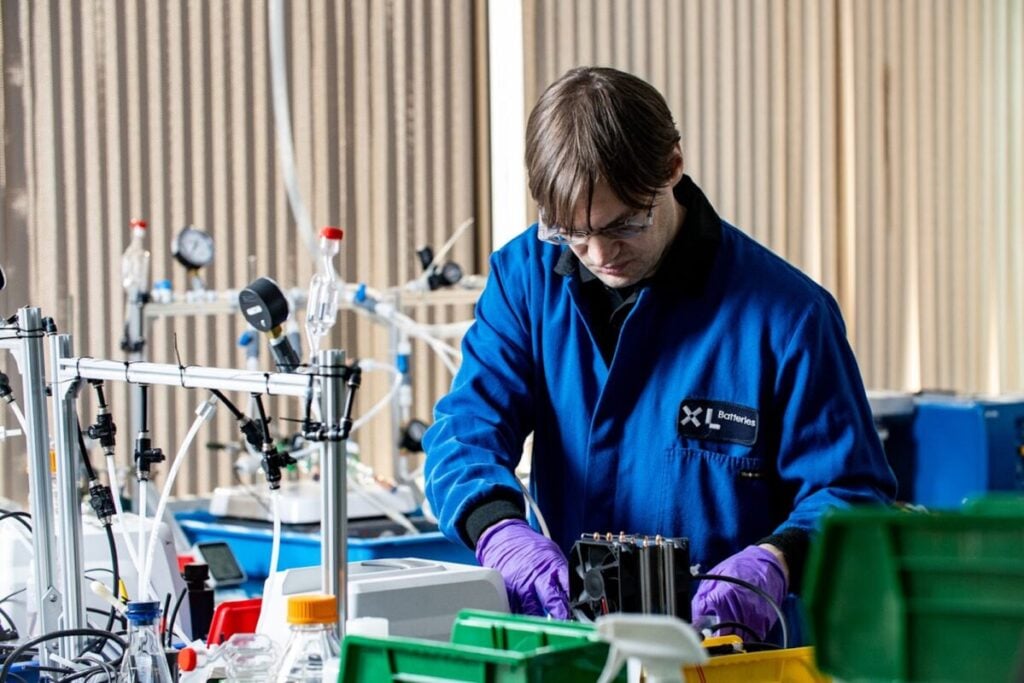
Tom Sisto, CEO of US flow battery provider XL Batteries, writes that lithium-ion batteries’ dependence on a supply chain controlled almost completely by one country is a risk that could be avoided.
The recent imposition of steep tariffs on global imports has exposed a dangerous vulnerability in the US and global battery industry.
A stark reality has emerged: China controls almost the entirety of the lithium-ion battery supply chain. Tariffs have already resulted in a large upward surge in battery prices, uncertainty and confusion in the industry, and a geopolitical risk that threatens to snowball as energy storage capacity grows.
China’s near-total control risks exposing potential weaknesses in the global supply chain. When Russia invaded Ukraine in 2022, European nations faced energy rationing and rapid inflation, revealing how energy dependency can threaten national security due to geopolitical tensions. Today’s battery supply chain monopoly presents an equally concerning risk for grid resilience and energy security worldwide.
Try Premium for just $1
- Full premium access for the first month at only $1
- Converts to an annual rate after 30 days unless cancelled
- Cancel anytime during the trial period
Premium Benefits
- Expert industry analysis and interviews
- Digital access to PV Tech Power journal
- Exclusive event discounts
Or get the full Premium subscription right away
Or continue reading this article for free
To ensure national security and energy resilience and meet decarbonisation targets, we must act quickly to diversify energy storage beyond conventional lithium-ion batteries to technologies that rely on globally abundant materials that practically any nation can source domestically.
The global battery supply chain bottleneck
China’s dominance of the lithium-ion battery supply chain is staggering. It boasts 90% of global raw materials refining capacity and produces 70% of cathodes, 74% of separators, 82% of electrolytes, and 85% of anodes. In total, more than 75% of global cell manufacturing takes place in China, and the U.S. imports nearly 70% of its lithium-ion batteries from there.
This didn’t happen by accident. For the past two decades, China has moved strategically to secure a stronghold over virtually every step in the supply chain, from developing mining interests in resource-rich regions globally to building a huge domestic processing infrastructure.
An economic reality check
The economic impacts of this dependency are already here. Tariffs have reversed the 30-year trend of declining battery costs, pushing prices significantly higher. Lithium-ion batteries imported from China could face combined tariffs of up to 82% by 2026, with the potential to reach 132% if additional planned tariffs take effect.
These increased costs will slow deployment of grid-scale energy storage – a technology proven essential for maintaining grid reliability – especially by balancing the intermittency of renewable generation. In 2024, developers built energy storage at a rapid rate, adding nearly 11GW to the grid with projections for even faster growth in 2025. This momentum is at risk precisely as energy storage is becoming crucial for grid stability.
The shortcomings of today’s domestic manufacturing in the US
While laudable, domestic manufacturing efforts face significant hurdles to meeting the growing demand for lithium-ion battery production. New battery facilities in the US often start with production yields as low as 50% and cost 33% more to build than comparable facilities in China.
Additionally, since most factories rely on cell components from China, projections show that even if North America has enough manufacturing capacity to meet cell demand by 2030, it will lack a sufficient domestic supply of cathodes and anodes.
A more secure path forward for energy storage
Simply attempting to replicate China’s lithium-ion cell production to meet demand is both risky and potentially futile, especially considering China controls the raw materials supply in addition to cell production capacity. We do not have time to wait for domestic manufacturing to scale to the degree needed to provide grid resilience and energy security.
Instead, we can ensure geopolitical security by investing in energy storage technologies built on abundant, geographically distributed materials. For grid-scale applications where size and weight are less critical than cost and longevity, alternatives to lithium-ion offer compelling advantages. Technologies with decentralised and flexible supply chains dramatically reduce disruption risks from international conflicts, trade restrictions and natural disasters.
Collaborative and strategic policy measures will be critical to facilitate this transition. Governments and industry should substantially increase investments in alternative battery technologies that reduce dependency on critical minerals and geopolitically sensitive regions.
Large-scale validation of alternative technologies across critical sectors is essential to speed adoption and build investor confidence. Tax credits and grants for manufacturers supporting domestic supply chains will help create resilient local ecosystems that can withstand global disruptions.
The time to act is now
The ability to store energy at grid-scale is becoming vital to any nation’s economy and security. Local sourcing of materials for next-generation storage technologies can put countries on a path to true energy independence by enabling enhanced grid resilience and industrial growth.
We should not wait for the next geopolitical crisis to expose our vulnerability. The world must act decisively to diversify energy storage technologies and supply chains. Our energy future requires technologies that can be produced anywhere from materials available everywhere. Only then can we ensure that energy security and climate goals advance together, creating a resilient pathway to our shared, stable, and sustainable future.
About the Author
Tom Sisto is the CEO and Co-founder of XL Batteries, which has created a grid-scale Organic Flow Battery aimed at delivering low-cost, safe, and efficient long-duration energy storage globally. He co-founded the company after his team serendipitously discovered organic molecules that are fundamentally stable in their charged and discharged states during his time as a postdoctoral research fellow at Columbia University. Tom has a Ph.D. in Organic Chemistry from the University of Oregon, an MS in Organic Chemistry from Boston University, and a BS in Chemistry from Colby College.
